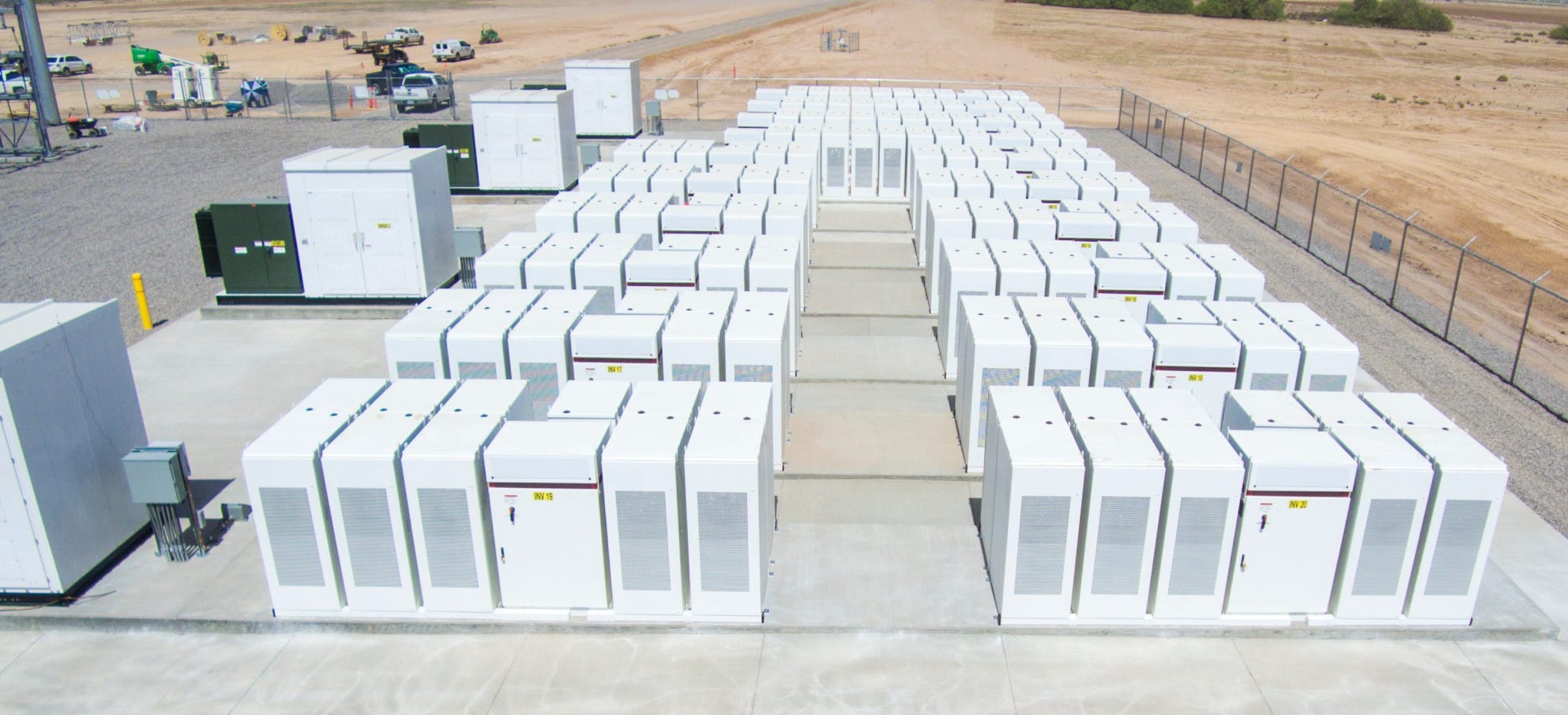The clean energy transition is underway. According to the International Renewable Energy Agency (IRENA), solar energy is the cheapest form of energy today. The US government's Energy Information Agency (EIA) notes that coal plants are shutting down because they are no longer profitable. And when it comes to new electricity coming online, the majority of it is clean energy according to the EIA. However, clean energy has an intermittency issue due to when the sun isn't shining and the wind isn’t blowing. Addressing the issue head on is energy storage. Let's look at what energy storage is all about.
Energy storage is simply a way of holding energy (potential energy) until it is ready to be used to do something (kinetic energy). (See DecarbToday’s "What is energy?" for more about potential and kinetic energy.)
Energy storage is used for two basic applications - transportation and stationary applications. The prime examples in the transportation world is what you see as the replacement for internal combustion engines most notably electric vehicles. Battery power for two wheeled transportation is also becoming more prevalent in motorcycles, scooters, and bicycles.
For stationary applications, the world of energy storage is much broader. Utilities leverage energy storage for a number of uses. One example deals with when the electricity demand is greater than what the utilities can produce (aka peak demand). When this happens, energy storage is used to provide that needed extra electricity.
Businesses also use energy storage for a variety of purposes. A significant use is for heat for industrial processes. Industrial heat makes up two-thirds of industrial energy demand and almost one-fifth of global energy consumption. Data centers and hospitals also tap stored energy for a backup source of electricity.
Energy storage is categorized by the technique used. The techniques are:
- Mechanical
- Thermal
- Chemical
Each of these techniques have variations which relates back to how the stored energy is used.
Mechanical energy storage systems take advantage of a force or gravity to store energy. A simple example of what is meant by a force is a spring. A force is applied to either compress or expand a spring. Once applied, the spring is storing energy.
A simple example of using gravity is a dam. The force of the water when the water is released comes from gravity.
The simplicity of mechanical energy storage is one reason why it is the most widely used form of energy storage. And among the variations, the most popular is known as pumped hydro storage (PHS). This is where electric pumps are used to pump water to a higher elevation and when electricity is needed, the water is allowed to flow to drive a generator. Currently, over 93% of all US energy storage is in this form.
The Department of Energy has a simple animation illustrating how pumped hydro storage works.
Variations of mechanical energy storage systems use the same concept with substitutes for the water. The substitutes include compressed air, liquified air, and liquified CO2.
Thermal energy storage technologies store energy in the form of heat. The components of a thermal energy storage system consists of a heat source, a solid or liquid that holds the heat, and an insulated container to keep the heat from escaping.
There are three main types of thermal energy storage:
The heat for the energy input can come from a variety of sources such as underground (geothermal), burning fossil fuels, electricity generated from fossil fuel, nuclear, wind, or solar.
Chemical energy storage systems store energy through...chemistry. The most common form of chemical energy storage is a battery. Examples include the AA and AAA batteries you often buy. Batteries are also becoming more sophisticated, paving the way for uses previously unavailable. Examples include electrified transportation and lawn equipment. They even can be massive in size for use by utilities for peak demand noted earlier. (See photo.)
Energy storage is not new. Historical records show dams were built before the Roman Empire. On the other hand, scaled thermal energy storage is nascent and chemical based batteries are beginning a technological leap forward in increased capacity and power delivery.
It is not a pipe dream to store excess clean energy produced when the sun and wind is strong only to be used when the sun and wind are not strong. Look again at the DOE animation. That PHS setup is operating off of clean energy. That's how the inherent clean energy intermittency issue will be addressed.
So the question is not whether intermittency can be overcome. The question is how quickly will it take place.

Tags